DirtyDogs304
New Member
After a lot of research I finally found a breeder that I felt comfortable with and got my very first tortoise. I think he looks great but I’m very new to this so I was hoping you all could let me know if you see any concerns. He’s eating, drinking, using bathroom well. He’s very active but puts himself to bed (burrows a little bit in his hide) every night when he’s had enough. I think its adorable! His enclosure has several hides and he has tried them all but I think he’s picked a favorite which happened to be the most difficult one to get to… but he’s a determined little guy. He does a lot exploring and loves to climb. He fell on his back once but had himself flipped back over rather quickly. However when I returned home today I found him on his back and not moving at all. I was certain he was dead! Thankfully I was wrong. Once I flipped him over he went right back to exploring and eating. I gave him a soak just in case he had become dehydrated or stressed. He seems completely ok. But I want to make sure that doesn’t happen again so I added some more substrate and rocks in an attempt to get rid off any big drop offs and provide rocks for traction if he does get wrong side up again.
This enclosure is temporary and I will soon be extending it and adding some live plants. It’s hard to tell from the pictures but it has lots of hills and different levels to climb.
In the pictures I had just added the additional substrate and it was moist and cold so my temp & humidity is out of wack but that’ll be straightened up soon.
Also- he is in a soak for most of the pictures. He doesn’t have any type of drainage, just wet (just in case it appeared that way).
I have read the care sheets posted here and months of research and Im trying to follow what seems to be the best ways But there are sooooooo many ”best ways”.
QUESTIONS:
any suggestions on my set up? See anything dangerous?
and any idea if he is really a “he”? I’m told he’s a yearling and it’s too early to tell but we named him “Mikey” for now.
is he an Eastern?
I currently have a 75 watt heat bulb but it only keeps the basking spot at 85-90. Would a 100watt make it too hot? I have the 75watt and the uvb in a dome and it sits directly on top of the plastic lid over a cut out hole. I was also concerned a 100 watt would melt the plastic lid. I was hoping that I wouldn’t have to hang the light but I can if necessary.
I’ve been soaking him at least 20 minutes daily so I only have a small water bowl that stays in the enclosure. Is that ok?
how does he look? any noticeable concerns?
The substrate does get a bit messy. Should I try adding orchid bark to the top layer?
This enclosure is temporary and I will soon be extending it and adding some live plants. It’s hard to tell from the pictures but it has lots of hills and different levels to climb.
In the pictures I had just added the additional substrate and it was moist and cold so my temp & humidity is out of wack but that’ll be straightened up soon.
Also- he is in a soak for most of the pictures. He doesn’t have any type of drainage, just wet (just in case it appeared that way).
I have read the care sheets posted here and months of research and Im trying to follow what seems to be the best ways But there are sooooooo many ”best ways”.
QUESTIONS:
any suggestions on my set up? See anything dangerous?
and any idea if he is really a “he”? I’m told he’s a yearling and it’s too early to tell but we named him “Mikey” for now.
is he an Eastern?
I currently have a 75 watt heat bulb but it only keeps the basking spot at 85-90. Would a 100watt make it too hot? I have the 75watt and the uvb in a dome and it sits directly on top of the plastic lid over a cut out hole. I was also concerned a 100 watt would melt the plastic lid. I was hoping that I wouldn’t have to hang the light but I can if necessary.
I’ve been soaking him at least 20 minutes daily so I only have a small water bowl that stays in the enclosure. Is that ok?
how does he look? any noticeable concerns?
The substrate does get a bit messy. Should I try adding orchid bark to the top layer?
Attachments
-
 IMG_1749.jpeg177.1 KB · Views: 3
IMG_1749.jpeg177.1 KB · Views: 3 -
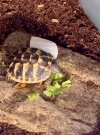 IMG_1748.jpeg201.9 KB · Views: 2
IMG_1748.jpeg201.9 KB · Views: 2 -
 IMG_1747.jpeg203.2 KB · Views: 3
IMG_1747.jpeg203.2 KB · Views: 3 -
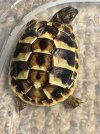 IMG_1722.jpeg1.7 MB · Views: 2
IMG_1722.jpeg1.7 MB · Views: 2 -
 IMG_1743.jpeg879.3 KB · Views: 1
IMG_1743.jpeg879.3 KB · Views: 1 -
 IMG_1738.jpeg642.5 KB · Views: 2
IMG_1738.jpeg642.5 KB · Views: 2 -
 IMG_1732.jpeg561.5 KB · Views: 2
IMG_1732.jpeg561.5 KB · Views: 2 -
 IMG_1733.jpeg417.3 KB · Views: 2
IMG_1733.jpeg417.3 KB · Views: 2 -
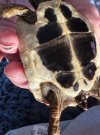 IMG_1742.jpeg861 KB · Views: 1
IMG_1742.jpeg861 KB · Views: 1 -
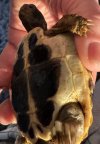 IMG_1740.jpeg544.7 KB · Views: 3
IMG_1740.jpeg544.7 KB · Views: 3 -
 IMG_1739.jpeg935.3 KB · Views: 2
IMG_1739.jpeg935.3 KB · Views: 2 -
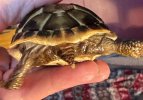 IMG_1737.jpeg481 KB · Views: 2
IMG_1737.jpeg481 KB · Views: 2 -
 IMG_1736.jpeg677.1 KB · Views: 3
IMG_1736.jpeg677.1 KB · Views: 3 -
 IMG_1731.jpeg340.2 KB · Views: 2
IMG_1731.jpeg340.2 KB · Views: 2 -
 IMG_1730.jpeg360.5 KB · Views: 1
IMG_1730.jpeg360.5 KB · Views: 1 -
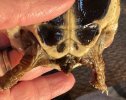 IMG_1729.jpeg461.2 KB · Views: 3
IMG_1729.jpeg461.2 KB · Views: 3 -
 IMG_1725.jpeg953.3 KB · Views: 2
IMG_1725.jpeg953.3 KB · Views: 2 -
 IMG_1724.jpeg608.9 KB · Views: 2
IMG_1724.jpeg608.9 KB · Views: 2 -
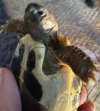 IMG_1728.jpeg510.8 KB · Views: 1
IMG_1728.jpeg510.8 KB · Views: 1 -
 IMG_1727.jpeg443.5 KB · Views: 3
IMG_1727.jpeg443.5 KB · Views: 3 -
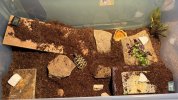 IMG_1756.jpeg1.9 MB · Views: 4
IMG_1756.jpeg1.9 MB · Views: 4